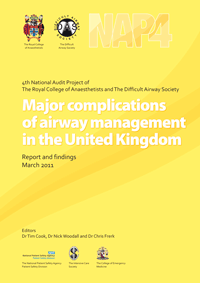There is a petition to save EMS intubation, but it claims to be a petition to save patients. The petition is not to save patients.

Image source
Details here and here.
The petition states that its intent is to protect patients, but it does not provide any evidence. It only makes the same claims that every other quack makes to promote his snake oil.
We are worse than homeopaths, because homeopaths do not actively harm patients by depriving patients of oxygen, as we do when we intubate.
We are the quack, witch doctor, homeopath, horseshit peddlers Dara O’Briain is describing.
Today we are possibly facing the removal of the most effective airway intervention at our disposal as paramedics, endotracheal intubation.[1]
Most effective?
There is some evidence that intubation can be – in limited situations, by highly trained, competent people – beneficial. There is also plenty of evidence that intubation is harmful. It is easy to kill someone by taking away the patient’s airway.
Most effective?
No.
This petition does not mention evidence, so it has no credibility when it comes to claims of whether intubation is effective. This petition expects us to believe in a faerie tale of magical improvement with intubation. This petition wants us to clap for Tinkerbell, because If we believe hard enough, it just might come true. Grow up.
Please sign this petition so that these patients have a chance to live[1]
Prove that requiring higher standards for intubation would take away a patient’s chance to live.
Prove that intubation improves outcomes.
This is a petition to keep standards low for paramedics.
This petition does not mention competence, or even what is involved in competence, because this petition is opposition to competence.
This is the Protect Incompetent Paramedics from Responsibility Petition.
Responsibility is for professionals. In EMS, we reject responsibility.
We are more concerned with whether our shoes are shiny, than whether we are harming, or helping, our patients. The reason EMS exists is to improve outcomes for patients.
We don’t deliver competent care, but only the appearance of competence. We are medical theater, putting on a fancy show. The TSA (Transportation Security Administration) is the same – all appearance and no substance.
Most effective? Maybe intubation is the most effective theater.
The outcomes of our patients are affected, but we refuse to learn if we are helping, harming, or doing equal amounts of harm and help.
We actually oppose learning. We are willfully ignorant – and proud of our defiant stand for ignorance.
How much hypoxia do we cause in our attempts to place the so called gold standard? The actual gold standard is helping the patient to protect his own airway, but who cares what’s best for the patient? Not those who sign the petition.
How much vomiting, and aspiration, do we cause?
How much airway swelling do we cause?
How many airway infections do we cause?
How much harm do we cause?
We don’t know. We don’t care. We oppose attempts to find out.
We are EMS and we believe that our actions should be protected from examination, because we are beautiful and unique snowflakes who demand our participation trophies without doing real work required to be competent.
Go ahead, snowflakes, demonstrate your incompetence by signing the petition, because this protect intubation petition is really a protect incompetence petition.
If we want to continue to intubate, and we want to improve outcomes for our patients, we need to demonstrate that intubation by EMS provides significant benefit and which patients are most likely to benefit. We can’t do that because we don’t care enough about our patients.
Brian Behn has a different reason for not signing the petition for low standards – Why I am Not Signing The Petition About Intubation.
Dave Konig also comments on the petition for low standards – Is ET Intubation Joining Backboards In Protocol?
–
Footnotes:
–
[1] Allow paramedics to continue to save lives with endotracheal intubation!
Anthony Gantenbein United States
Petition site
.












Subscribe to RogueMedic.com